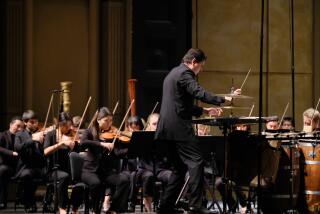AN 18-PIECE SAMPLER OF SWING SPIRIT
NEW YORK — The American Jazz Orchestra, an 18-piece ensemble dedicated to the live presentation of swing music that now survives mainly on records, presented a concert Wednesday evening at the Grand Hall of Cooper Union as part of the JVC Jazz Festival.
In a retrospective of the four previous concerts held since its formation last year under the guidance of critic Gary Giddins, the orchestra attempted to be all things to all people, switching its personality from Fletcher Henderson to Ellington to Lunceford to Basie, then from Claude Thornhill to Benny Goodman to Benny Carter.
No one group of musicians can relive all these lives without an occasional identity crisis, yet the various transitions moved almost seamlessly. The soloists tended to duplicate the spirit rather than the letter of the originals, though Dick Katz clearly had learned Ellington’s “Sepia Panorama” chorus note for note.
Frank Wess, in addition to playing lead alto sax, was required to become Benny Carter on one tune and Willie Smith on another. Trumpeter Cootie Williams was variously reinvented by Virgil Jones and Marvin Stamm. Doc Cheatham, now 82, came out to sing the Trummy Young vocal on “Margie.”
For some, it was pure nostalgia, for others, a history lesson; for most, it represented a listenable genre that has worn better than might have been expected. On the Basie tunes, the rhythm section was loose and happy; on the Luncefords, a trifle lumpy. The best music orchestrally was that of Henderson (“King Porter Stomp”), Eddie Sauter (despite a weak clarinetist, Ken Poplowski, in the Goodman role on “Benny Rides Again”), the perennial beguiling Thornhill theme “Snowfall” and Carter’s memorable arrangement of “Sleep.”
Because the charts, in strict 4/4 time, called for no tempo cues, the presence of John Lewis as conductor seemed expendable; however, he had clearly done an expert behind-the-scenes job of pulling this disparate package together. The evening was a rear-view window looking out on the creations and limitations of a fast disappearing era.
More to Read
The biggest entertainment stories
Get our big stories about Hollywood, film, television, music, arts, culture and more right in your inbox as soon as they publish.
You may occasionally receive promotional content from the Los Angeles Times.








